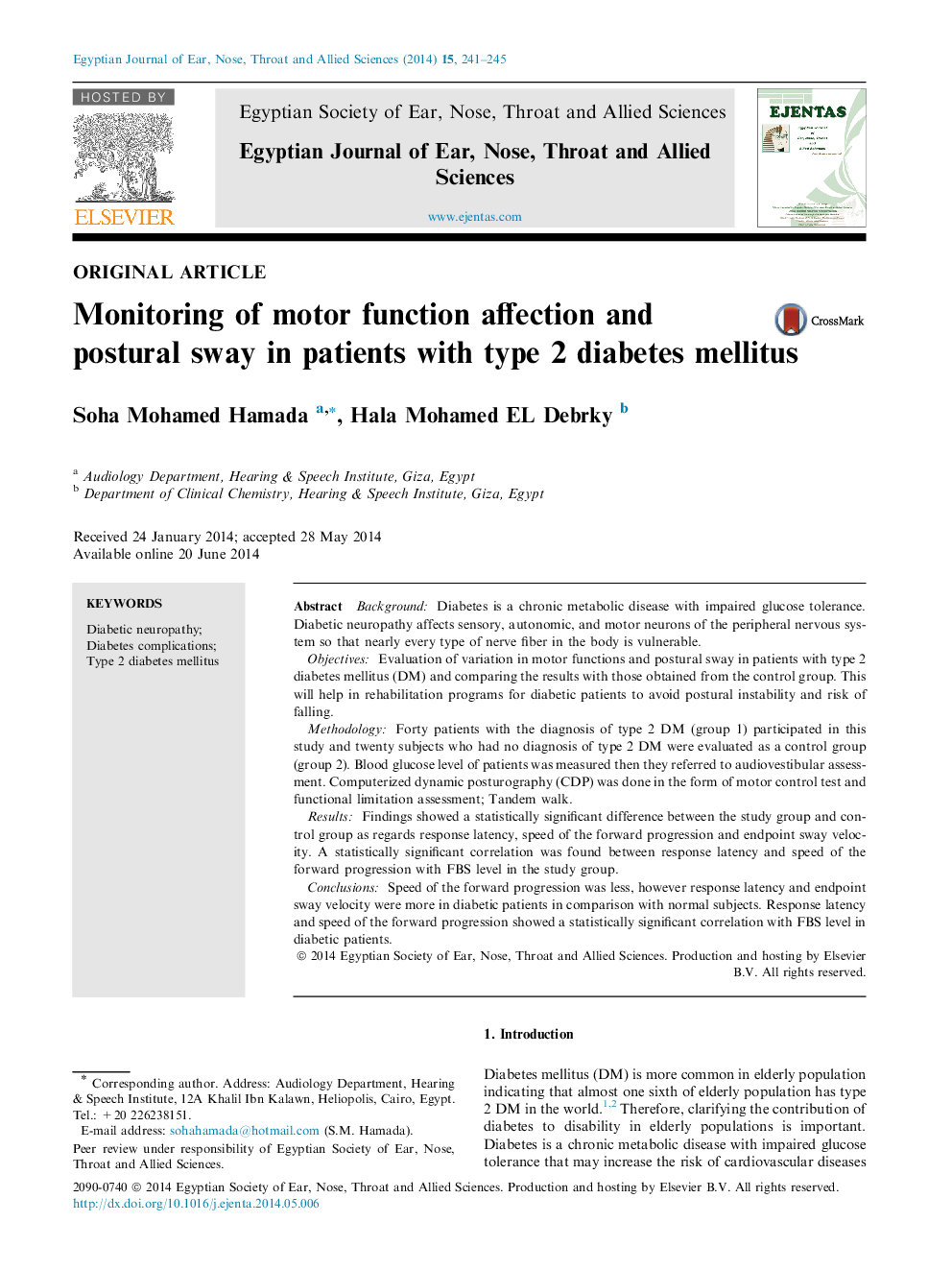| Article ID | Journal | Published Year | Pages | File Type |
|---|---|---|---|---|
| 4108907 | Egyptian Journal of Ear, Nose, Throat and Allied Sciences | 2014 | 5 Pages |
BackgroundDiabetes is a chronic metabolic disease with impaired glucose tolerance. Diabetic neuropathy affects sensory, autonomic, and motor neurons of the peripheral nervous system so that nearly every type of nerve fiber in the body is vulnerable.ObjectivesEvaluation of variation in motor functions and postural sway in patients with type 2 diabetes mellitus (DM) and comparing the results with those obtained from the control group. This will help in rehabilitation programs for diabetic patients to avoid postural instability and risk of falling.MethodologyForty patients with the diagnosis of type 2 DM (group 1) participated in this study and twenty subjects who had no diagnosis of type 2 DM were evaluated as a control group (group 2). Blood glucose level of patients was measured then they referred to audiovestibular assessment. Computerized dynamic posturography (CDP) was done in the form of motor control test and functional limitation assessment; Tandem walk.ResultsFindings showed a statistically significant difference between the study group and control group as regards response latency, speed of the forward progression and endpoint sway velocity. A statistically significant correlation was found between response latency and speed of the forward progression with FBS level in the study group.ConclusionsSpeed of the forward progression was less, however response latency and endpoint sway velocity were more in diabetic patients in comparison with normal subjects. Response latency and speed of the forward progression showed a statistically significant correlation with FBS level in diabetic patients.
